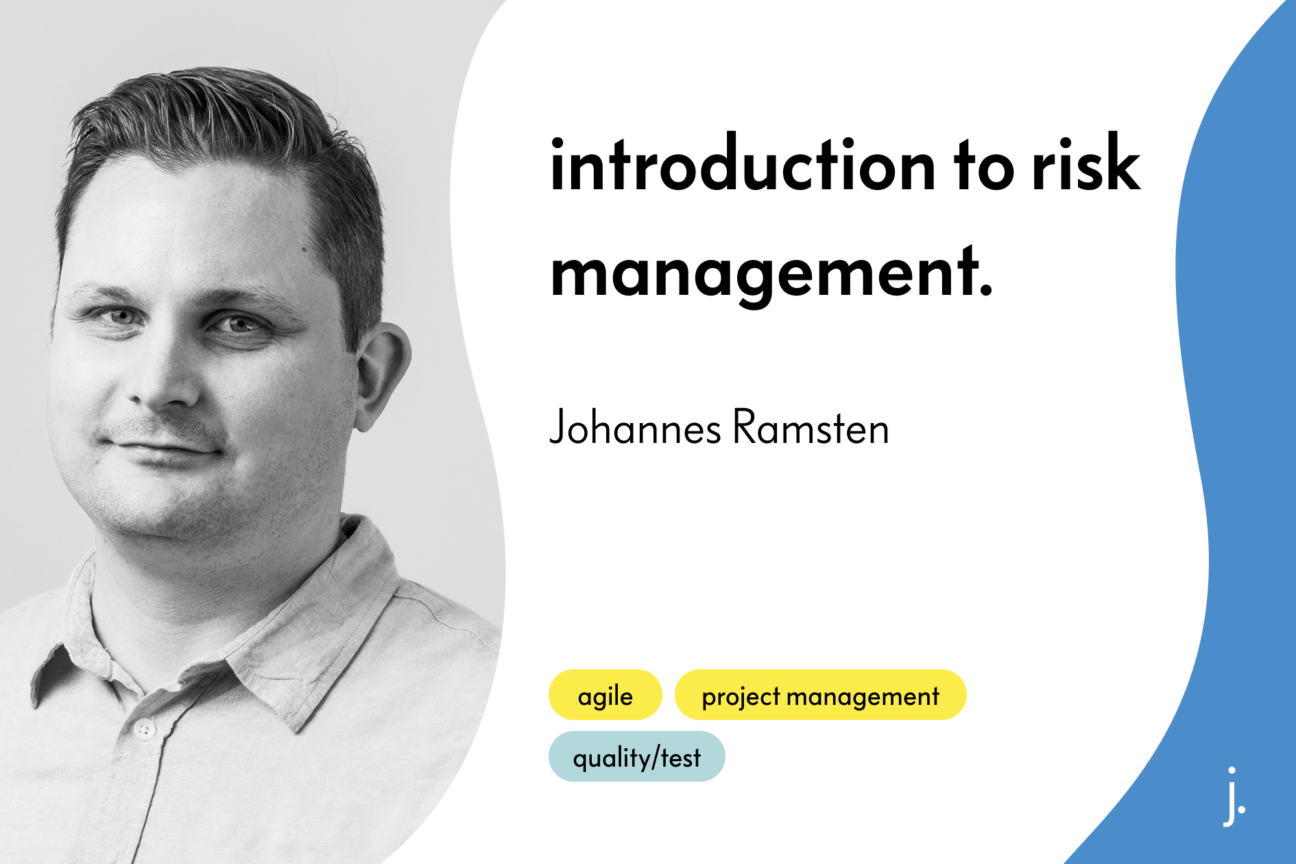(Reading time: 2 minutes)
At our KHalfday on April 24th, our software developer Johannes Ramsten hosted an intro session about Risk Management. With experience from previous projects and courses, he explained how this mindset can benefit and bring value to projects. We have asked Johannes to share some of the key notes from his session.
Risk Management is a standardized process that allows you to identify risks and make informed decisions on how to handle them. In short, it’s a way of working that allows you to deliver better quality in your products or projects.
By utilizing Risk Management, you can avoid certain pitfalls with your product or project and better prepare for upcoming issues. The earlier a potential risk or problem can be identified, the cheaper and easier it will be to address. You might also find risks that are present but still considered alright to keep, due to the overall benefit gained from the project.
“Even though not all projects have any sort of regulatory needs that requires you to perform risk management, I have found that it is a useful tool to bring with you, and a great mindset to have when reviewing a project.”
By identifying how specific events can affect your project, positively or negatively, you can alter your project to mitigate the drawbacks or utilize identified benefits. For example, if there is a risk that a service might go offline, add another replica of the service hosted in a different geographical location. This way your service stays online 24/7.
Risk management is a living process living alongside your project. You need to review it periodically to identify new risks and assess them accordingly. You should never treat risk management as something you do once to get it out of the way, and then never look at it again.
The benefits of using Risk Management
Risk Management can be used to prepare disaster recovery plans. It helps you to identify where a particular risk exists within a product and assess its impact and probability of occurring. This enables you to find what possible mitigations can be created both before and after a potential disaster occurs.
Also, you can use it to review competing products. When you understand the errors of similar cases, you can develop better products.
Adapt the mindset in your teams
A lot of teams have incorporated some form of risk management in their projects. Every time you handle situations that might arise, you perform risk management. But few actually designate this process as Risk Management specifically.
Most likely Risk Management is already a natural part of how you and your team operate in a project. To some extent, you can say that Risk management is a way to document and make the team aware of why certain precautions or mitigation decisions are needed. By documenting the process, you have a record of why decisions are made, and that different outcomes have been considered during the project.
